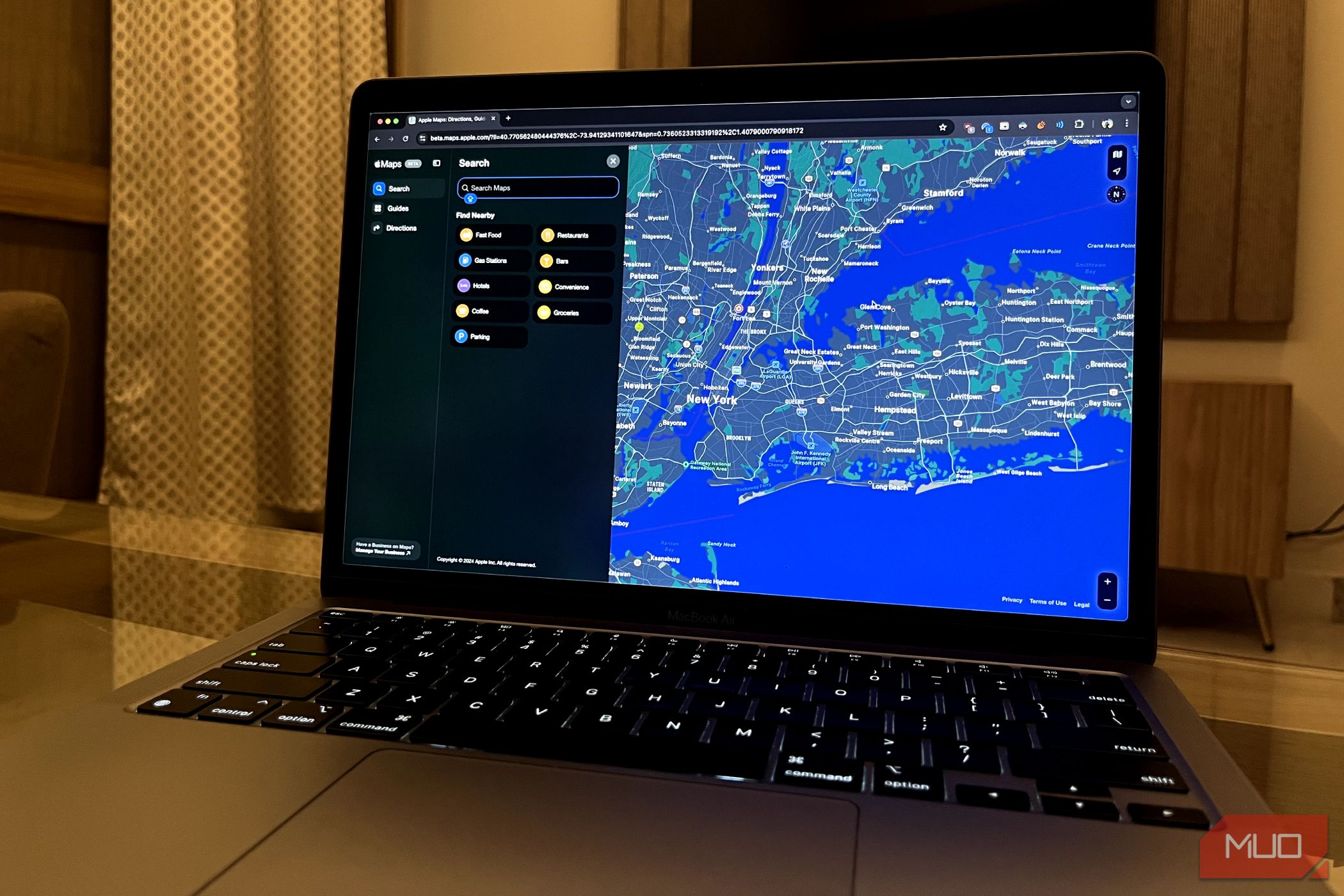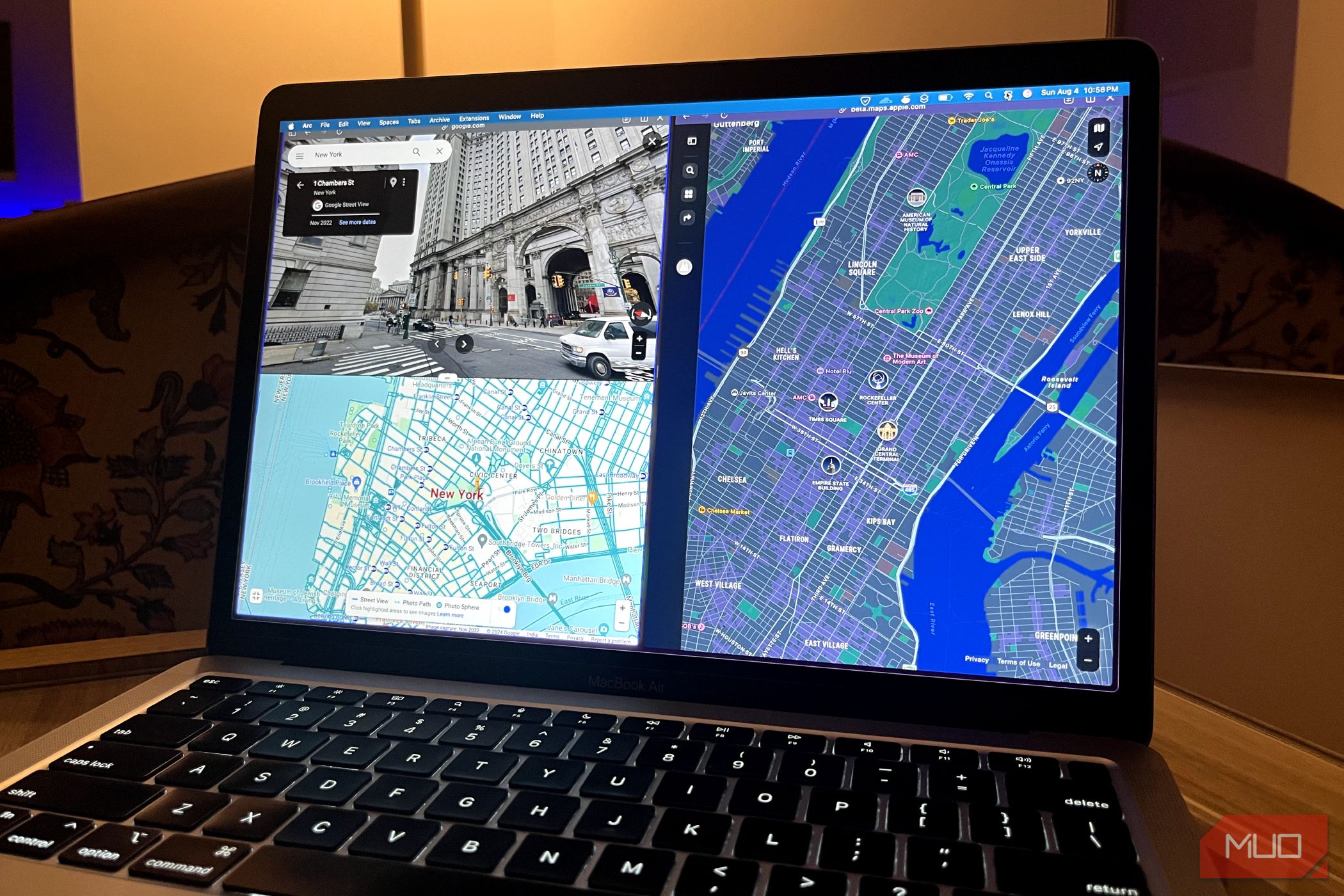I’ve used Google Maps for years despite being an iOS user. But when Apple dropped a new feature that made finding destinations easier, I had to test the two apps to see which was actually better.
What’s Changing in Apple Maps
On May 14, Apple introduced expert ratings to locations in Apple Maps. This lets you search for Michelin Key hotels, as well as Michelin-starred, Bib Gourmand, and Green Star restaurants more easily within the app. This is the first phase of the rollout, and Apple revealed that expert insights from The Infatuation and Golf Digest will follow shortly.
As part of this update, users can now look up some of the better places to eat and stay directly through Apple Maps. It’s fairly simple to use as well. If you want to find a Michelin-starred restaurant nearby, type “restaurants” into the search bar and scroll through the search filters under the search bar. Select Michelin Distinctions from the options, and you can look up restaurants with one, two, or three Michelin stars, Bib Gourmand, or Green Star ratings.

Related
Apple Maps Is Finally Available on Android Devices—but I Won’t be Making the Switch
Apple Maps goes cross-platform with a mobile browser version that works on Android devices.
The feature works similarly for hotels. You can type “hotels” in the search bar and select Michelin Distinction to filter suitable options. In the future, golfers will also benefit from this update and will be able to discover and choose their preferred courses based on expert insights.
Putting Apple Maps to the Test
For a long time, Apple Maps significantly lagged behind Google Maps. Despite its iOS integrations and a better aesthetic, it often came up short on real-world usability, especially when trying to find new destinations. Google Maps undeniably had the edge with more business listings and user-generated reviews, which made it easy to tell what you can expect from a place.
In comparison, Apple Maps only displayed Yelp reviews for the longest time. And even then, you were just about able to see the preview of these reviews. If you wanted more details, you were redirected to Yelp. If you didn’t have the Yelp app, you had to download it. With Google Maps, I’ve never had to leave the app to get the full picture. This is one of the main reasons why I’ve never switched from Google Maps to Apple Maps.
But Apple clearly wants to change that. Over the last few years, it’s been quietly launching features that are bridging the gap. Its partnership with the Michelin Guide, The Infatuation, and Golf Digest is the company’s latest move to turn Apple Maps into more than just a navigation tool. Of course, this update only helps if you’re looking for fancy places to dine, but it’s one step in the right direction to making Apple Maps the go-to app for discovering local spots.
When this update dropped, I reinstalled Apple Maps without many expectations. But I was pleasantly surprised to see that it had caught up to Google Maps, almost to the point where I could see myself using it full-time. Finding Michelin-starred restaurants was just as easy as Apple promised. After a quick search and selecting the right filters, I was able to scroll through my options. The Michelin Guide restaurants came with a short blurb that helped give a sense of what to expect from the restaurant in terms of the best dishes and the overall vibe.
I tested how this experience translated to hotels, and it was just as smooth. Michelin Key-rated hotels were easy to find using the search filters, and each listing included a blurb that highlighted the history and features of the place. You can also make a booking directly at one of these places via the Michelin Guide, right through Apple Maps’ interface. I’m not entirely sure if I would use the Michelin Guide over platforms like Booking.com or TripAdvisor for hotel reservations, but I assume the integration is helpful for travelers looking for high-end stays.

Related
I Never Travel Without Checking These 3 Accommodation Pricing Sites
If you’re not cross-checking, you’re probably missing out on the best deals.
How It Compares to Google Maps
Despite being in the iOS ecosystem, I’ve always used Google Maps. While the navigation experience between the two apps is mostly on par at present, Google still does better when it comes to discovering new spots. Sure, if you’re only looking to find fine-dining restaurants or the best hotels in your city, Apple Maps’ integration with the Michelin Guide can prove helpful.
But beyond that, not much has changed for the average user. Google still has the upper hand in terms of helping you discover underrated gems and casual eateries around you.
So, while Google Maps will continue to be my go-to navigation app, at least in the near future, I’m interested to see how Apple Maps evolves from here. I hope it soon starts incorporating more in-app insights for regular restaurants and hotels as well.








Leave a Comment
Your email address will not be published. Required fields are marked *